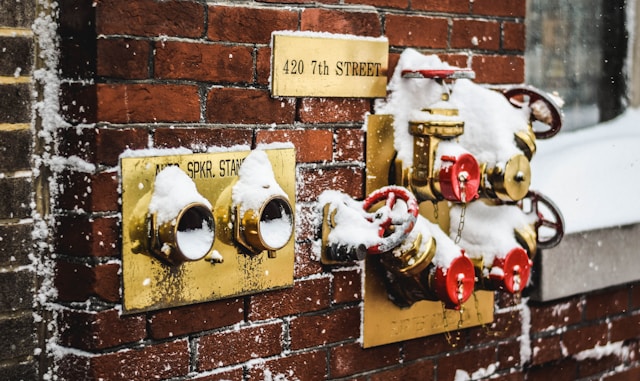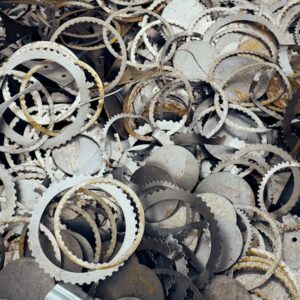Key Takeaways
- Insight into the critical role of metal hoses within various industries.
- Detailed overview of types and features of metal hoses.
- Examination of the applications where metal hoses are indispensable.
- Discussion on the importance of flexibility and durability in metal hoses.
- Guidance on best practices for the installation and maintenance of metal hoses.
Table of Contents
- Introduction to Industrial Hose Applications
- The Evolution of Metal Hoses in Industry
- Types and Features of Industrial Metal Hoses
- Typical Applications of Metal Hoses
- The Importance of Flexibility and Durability in Metal Hoses
- Installation and Maintenance Best Practices
Introduction to Industrial Hose Applications
In industrial mechanics and engineering, the value of seemingly minor parts like metal hoses is often underestimated, yet they play a crucial role in ensuring system functionality. These hoses are designed to withstand harsh conditions and transport gases and fluids, tailored to specific needs and environmental constraints, contributing significantly to industrial operations. Specially engineered for strength and resilience, products like aluminum ducts Addison, IL, have become robust solutions, seamlessly integrating into various industrial processes and applications. The importance of seemingly minor parts like metal hoses is frequently overlooked in industrial mechanics and engineering. Yet, they are vital for ensuring system functionality by enduring harsh conditions and facilitating fluid and gas transport. Specially engineered for strength and resilience, products like aluminum ducts provide:
- Tailored solutions to meet specific needs and environmental constraints.
- Seamlessly integrating into industrial processes and applications.
- Ultimately enhancing efficiency and reliability.
The Evolution of Metal Hoses in Industry
From early uses to today’s high-tech demands, metal hoses have experienced considerable development. Initially, their application was static, in simple fluid transfers or basic machinery cooling systems. However, as the complexity and scale of industrial tasks grew, the need for hoses that could withstand diverse and challenging environments became apparent. The advancement of metallurgy and the integration of alloys like stainless steel have notably enhanced the performance of these hoses. Today, they are an intrinsic part of intricate systems designed to sustain under extreme temperatures, corrosive substances, and the stress of repetitive motions.
Types and Features of Industrial Metal Hoses
Identifying the appropriate type of metal hose is critical to match industry requirements. The corrugated version, distinguished by its rippled design, is engineered to provide the durability and flexibility required in applications dealing with fluctuating pressures and thermal expansion. Conversely, strip wound hoses are characterized by their rigid structure, making them ideal for transferring solid materials, protecting them from crushing forces, and ensuring longevity. The material selection includes options like stainless steel, which offers corrosion resistance and hygiene for food-grade applications, or aluminum, which is selected for its lightweight and excellent thermal conductivity.
Typical Applications of Metal Hoses
Industrial metal hoses underpin many applications vital to various sectors’ infrastructure. They are often integral in fluid handling systems, from hydraulic lines in manufacturing to cryogenic pipes in the gas industry. In every application, these hoses facilitate the safe and controlled transport of substances. Similarly, metal hoses are employed in heat exchangers, playing a pivotal role in energy transfer and system cooling applications, which are vital for industries where temperature regulation is crucial. The portfolio of usage spans from the pharmaceutical to the aerospace sector, reflecting the versatility and indispensability of metal hoses in contemporary industry.
The Importance of Flexibility and Durability in Metal Hoses
Industrial environments demand hoses that can maintain high-performance levels under strenuous conditions. Flexibility and durability are not just desired features but essential requirements for metal hoses to withstand the rigors of their application areas. These characteristics enable hoses to absorb vibrations, accommodate movements, and resist the challenges of variable pressures without compromising the integrity of the conveyance system. They are especially critical in the aspect of safety, where the failure of a metal hose can result in leaks, spills, or worse, posing risks to both personnel and the environment.
Installation and Maintenance Best Practices
The optimal functioning of metal hoses relies on their correct installation and consistent upkeep. Technicians installing these components must follow precise guidelines to ensure stable and secure connections, particularly in systems operating under high pressures or temperatures. Regular maintenance is a non-negotiable practice that extends the usable life of these hoses and prevents unexpected downtimes. Inspections can identify potential issues early, like corrosion or wear, allowing for preemptive action. Expert knowledge of the maintenance of industrial equipment entails routine examinations, timely repairs, and, if needed, the replacement of hoses before failures occur, thus maintaining uninterrupted industrial operations.




